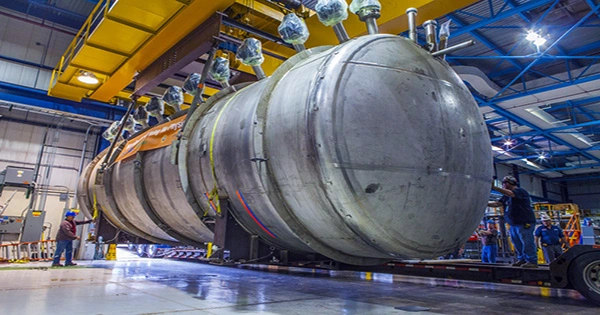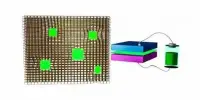The STEREO collaboration announced the end results of its antineutrino research after several years of operation. The researchers used their data to rule out any indications of the presence of sterile neutrinos, a different neutrino state predicted by many theories. The finding, which was published in Nature on January 11, has significant ramifications for several branches of fundamental physics.
The so-called Standard Model of Particle Physics in contemporary particle physics describes all known fundamental particles and their interactions. The neutrinos, which were created in 1930 by Wolfgang Pauli to adhere to the laws of universal energy conservation, are included in the model. Neutrinos interact only through the electroweak force and are extremely light. They are therefore quite difficult to find. It wasn’t until 1956 that a direct experimental detection was made.
Neutrinos come in three different varieties today. The fact that these neutrinos have a very little but non-zero mass allows them to switch identities between these distinct states. About 20 years ago, these so-called neutrino oscillations were first discovered.
A discrepancy between the observed and anticipated antineutrino flux emitted by nuclear reactors was discovered in 2011 as a result of enhanced precision. As a result, the idea that there might be an additional neutrino state that is sterile, or not involved in weak interactions, was raised. This article may also help to explain physical phenomena like dark matter, which are still poorly understood.
The STEREO experiment was created and put into operation in 2017 at the high-flux nuclear research reactor at the ILL Grenoble in order to definitively test this theory of sterile neutrinos and learn more about them. Ten meters from the reactor core was a detector made of six similar elements.
The knowledge gained via numerous generations of reactor neutrino experiments was beneficial to the project. The cells of the detector were perfectly positioned to search with remarkable accuracy for the signature of sterile neutrinos since they were shielded from the outside environment. Position-dependent aberrations in their energy distribution should manifest quickly after leaving the reactor.
The STEREO collaboration, which includes scientists from the Max-Planck-Institut für Kernphysik (MPIK) in Heidelberg, Germany, the French institutes CEA Saclay, CNRS, the universities Grenoble Alpes and Savoie Mont Blanc, as well as the Institut Laue-Langevin (ILL), has just released its most recent findings combining the entire data set: Scientists have discovered an abnormality in the neutrino flux produced by nuclear reactors, but sterile neutrinos are not to blame.
According to Christian Buck, one of the experiment’s principal researchers from the MPIK, “We were able to witness a total of more than 100,000 neutrinos in the years 2017 to 2020, however we could not determine any sign of probable sterile neutrinos within these measurements.” Instead of the neutrino experiments themselves, the reported anomalies most likely originate from underappreciated errors in the nuclear data from the radioactive decays used for the flux forecast.
The Standard Model and its neutrino component are further supported by this discovery, which firmly refutes the sterile neutrino idea.
Along with the search for sterile neutrinos, the STEREO experiment offers the most precise analysis of the antineutrino spectrum from uranium-235 fission to date. It is intended to serve as a reference spectrum for upcoming high precision reactor experiments like those used to determine the neutrino mass hierarchy or test the Standard Model at low energies. Furthermore, these kinds of exact measurements might aid in a better understanding of the phenomena occurring, say, during a reactor shutdown.
Both the STEREO detector’s construction and the data analysis both benefited greatly from the work of the MPIK researchers. For instance, MPIK invented, produced, and characterised the extremely unique liquids used in the detector. In particular, MPIK is responsible for the gadolinium-loaded liquid scintillator that serves as the detector’s brain.
The extremely unique filling systems and light sensors used to measure the light signals in the detector following the neutrino reaction are also very important. The MPIK group was engaged in the areas of analysis coordination, efficiency assessment, and energy reconstruction.














